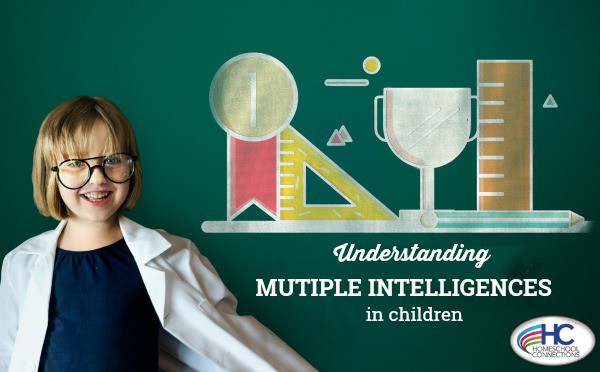Posted 7/13/17

As a homeschooling parent, understanding multiple intelligences in children will better help you teach and choose curriculum that leans towards your children's strengths. Developed in 1983 by developmental psychologist Howard Gardner, the use of his multiple intelligences test has been embraced by a number of educators and parents. Gardner’s theory is defined as a measurement of cognitive capabilities using a wide range of scope as opposed to a singular standardized test. Unlike what is considered a traditional test of intelligence, this multi-faceted approach takes into account that children learn in a number of ways.
Understanding Multiple Intelligences in Children
Gardner's book, “Frames of Mind”, covers what he considers are the eight intelligences used in learning.
Logical-Mathematical Intelligence:
The natural ability to think in a scientific and logical manner, perform difficult mathematical equations, reasoning, and pattern recognition fall under logical or mathematical intelligence. Chess players, scientists and computer program developers are considered strong in this category of intelligence.
Linguistic Intelligence:
These skills involve verbal and written talent as well as the ability to memorize vocabulary and dates. Higher linguistic skills are found in authors and translators as well as people involved in the media.
Spatial Intelligence:
Visualization and perception of the world around as well as artistic creative ability dictate this area. Increased spatial intelligence is seen in artists, inventors, designers, and architects.
Bodily-Kinesthetic Intelligence:
Intelligence of the physical nature including hand-eye coordination, athletics and the skill to build things. Attention to detail and muscle control creates actors, chefs, and athletes with this form intelligence.
Musical Intelligence:
Those with highly developed sense of rhythm, pitch, tone and even language skills such as composers, entertainers, and musicians fall into this category.
Intrapersonal Intelligence:
Being capable of reflecting upon one’s own emotions and reactions and viewing your own personality clearly is part of intrapersonal intelligence. Counselors and philosophers are commonly found to be strong in this area.
Interpersonal Intelligence:
Understanding the emotions of others and their relationships is the elemental skill in this area. Therapists, teachers, and clergy tend to test higher in this intelligence region according to Gardner.
Naturalist Intelligence:
This is the inane ability to distinguish and perceive the natural world such as plants and animals. People with these tendencies gravitate towards professions such as gardening, veterinarians, and other areas to work with nature and animals.
The combination of these eight intelligences determines the learning ability of each one of us. Gardner’s theory concludes that while basic linguistic and logical testing is important, they do not determine the ability a person has of assimilating new knowledge. However, by understanding multiple intellengeces in children, you can utilize them to your child's best advantage can help accelerate learning.

